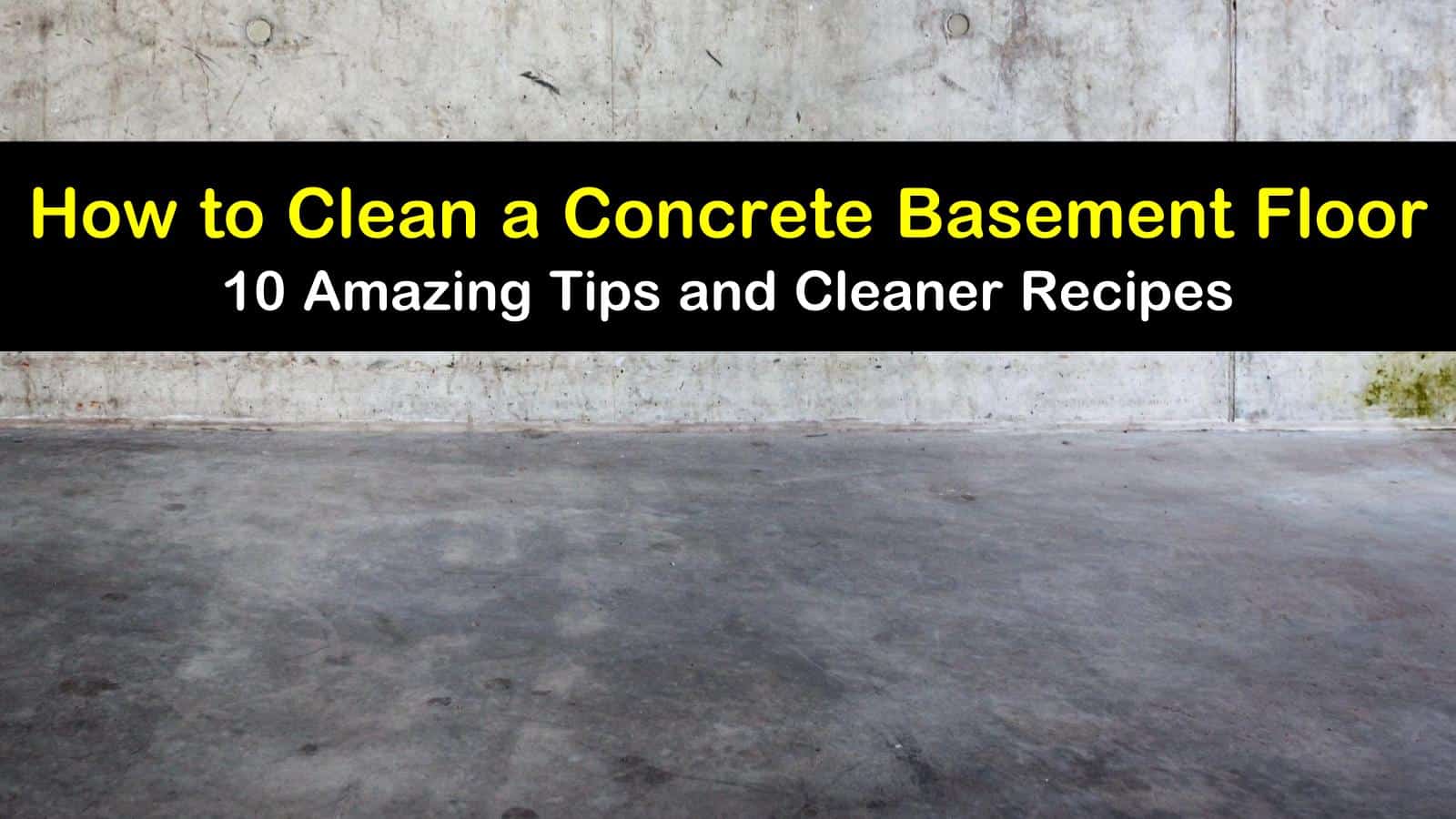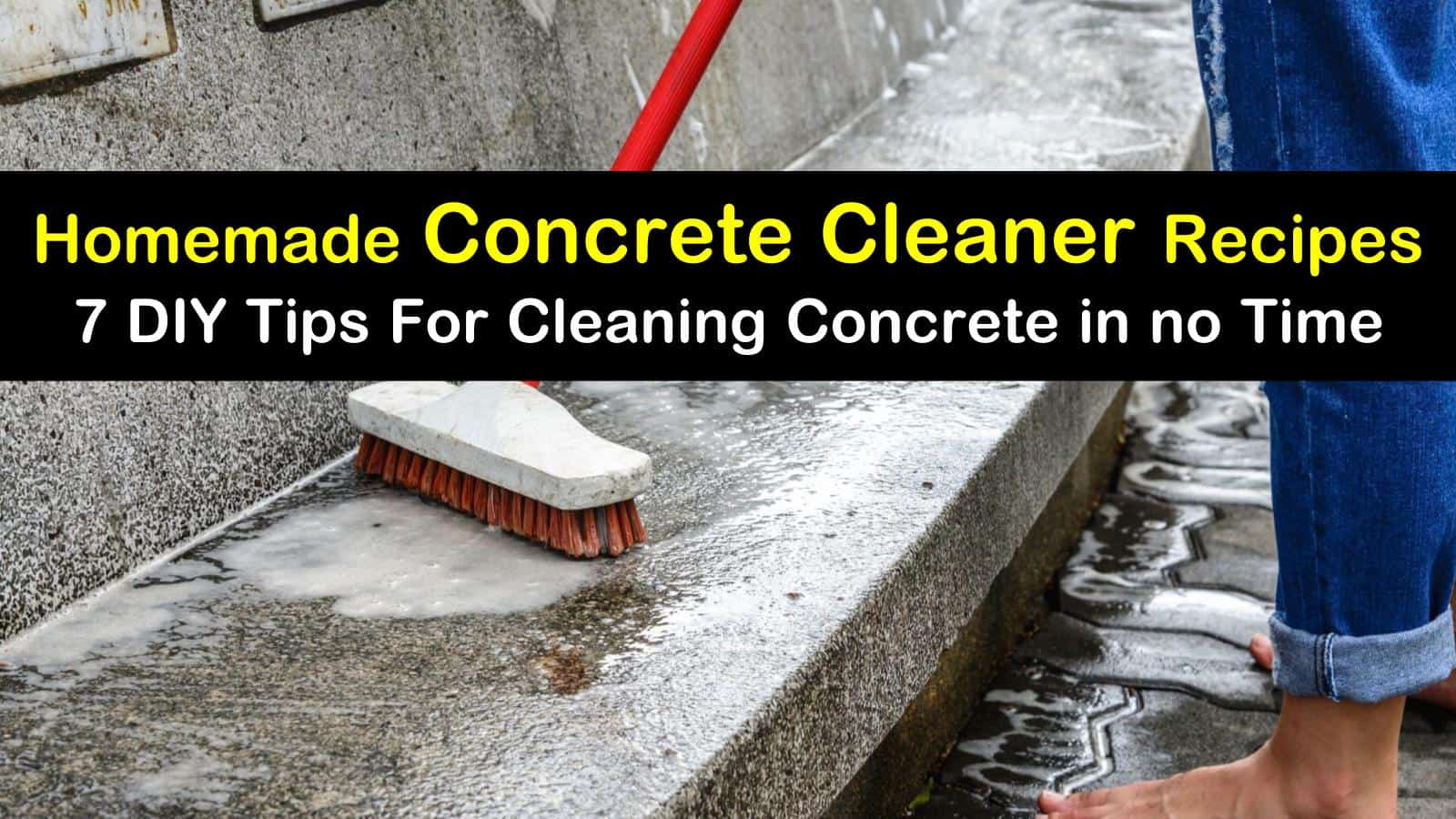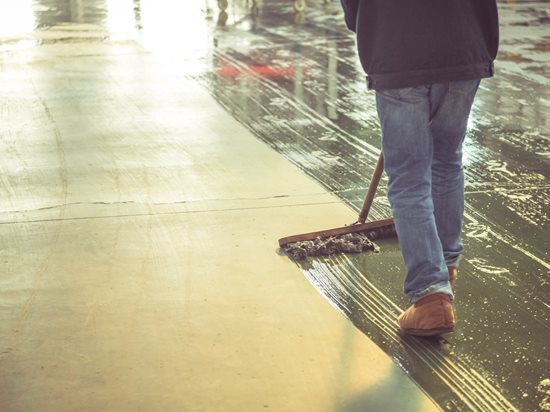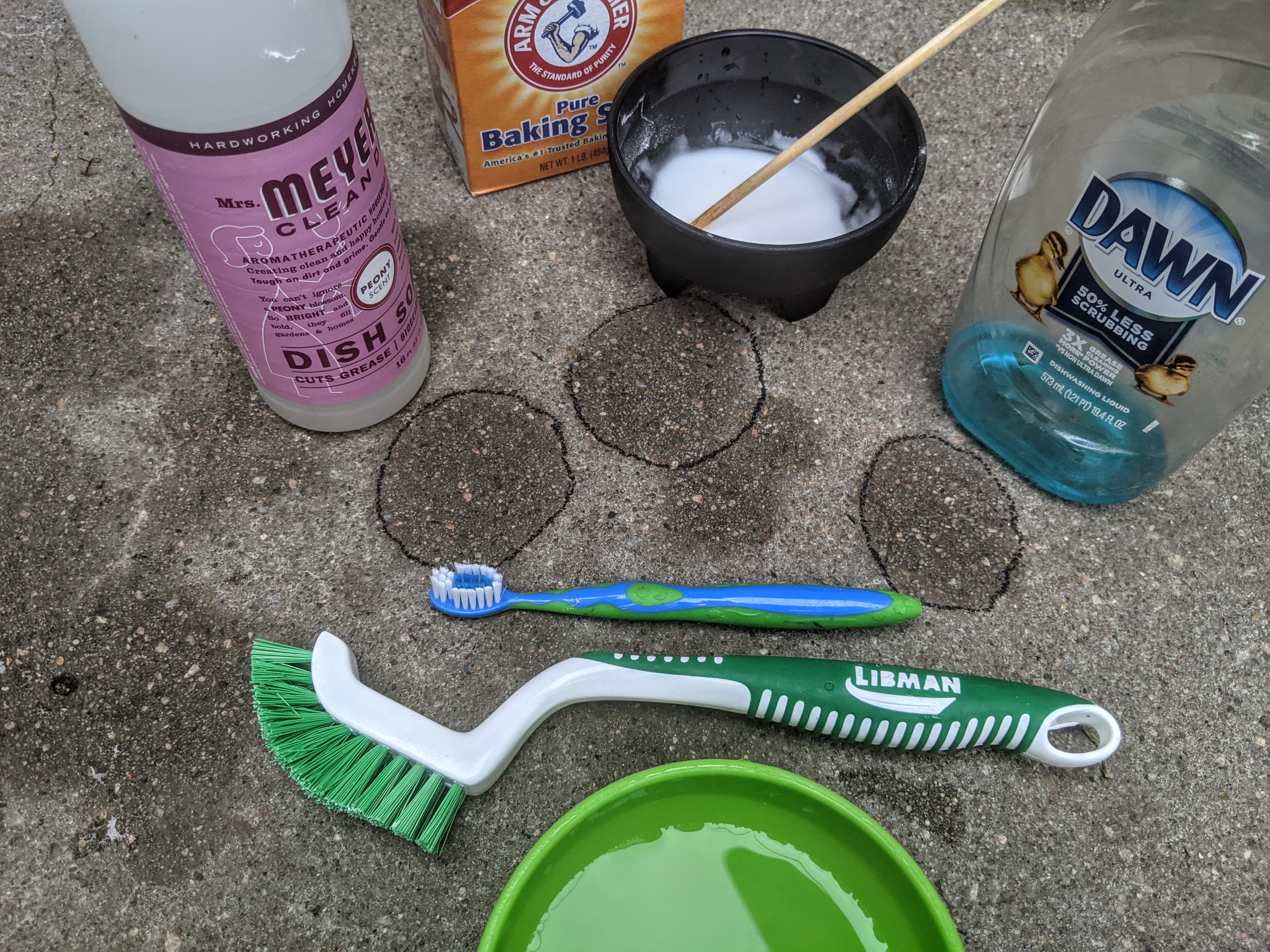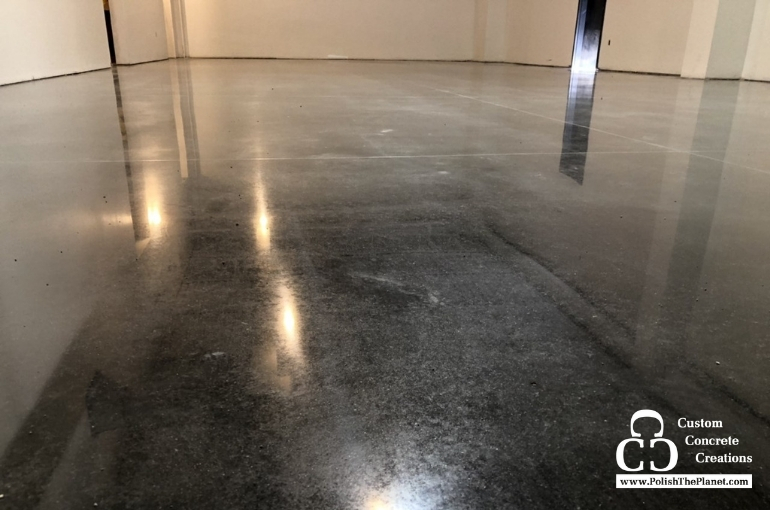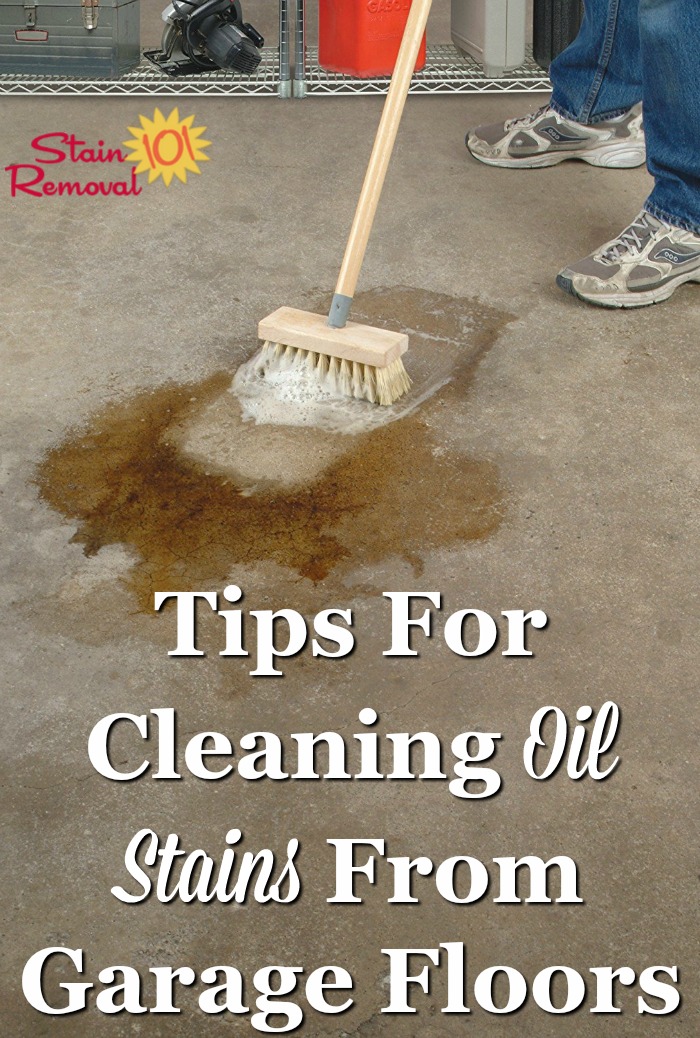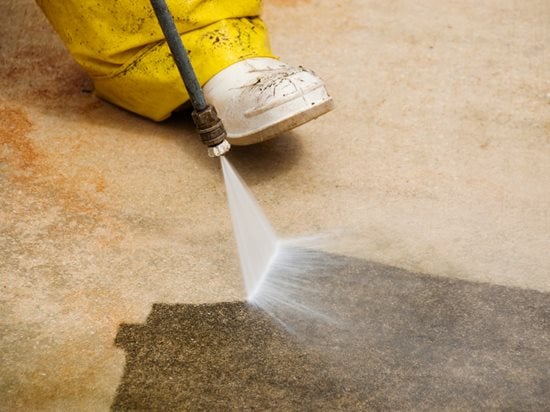Concrete floors are known for their durability and low maintenance, but they still require regular cleaning to maintain their appearance and integrity. Whether used in garages, basements, patios, or industrial spaces, concrete floors can accumulate dust, stains, and grime over time. In this guide, we’ll provide useful tips to help you clean and maintain concrete floors effectively. From choosing the right tools to dealing with stubborn stains, you’ll find practical advice to keep your concrete surfaces looking their best.
Images about Concrete Floor Cleaning Tips
Concrete Floor Cleaning Tips
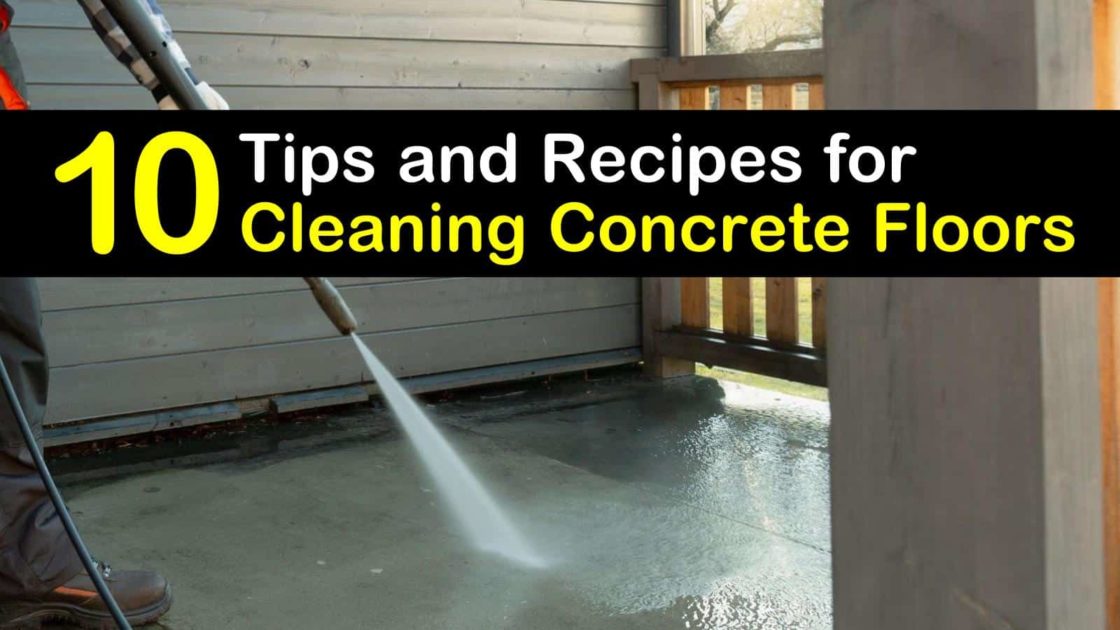
Tools and Equipment for Cleaning Concrete Floors
Having the right tools and equipment makes all the difference when cleaning concrete floors. Brooms and dust mops are essential for everyday maintenance, helping to remove loose dirt and debris before they scratch the surface. For large spaces, a push broom with stiff bristles will be more efficient than a standard broom.
Mops and buckets are necessary for deeper cleaning. Use a microfiber mop for smooth concrete floors and a string mop for textured surfaces. If the floor has a polished or sealed finish, ensure you use non-abrasive mops to prevent surface damage. For cleaning solutions, a pH-neutral cleaner is ideal, as it won’t harm sealants or finishes.
In cases where heavy dirt or grease buildup is present, pressure washers and floor scrubbers can be very effective. Pressure washers help to remove tough grime from outdoor or garage floors, while floor scrubbers are useful for large indoor spaces. Always check the floor’s condition before using these tools to avoid unnecessary damage.
General Cleaning Tips for Everyday Maintenance
Regular maintenance is the key to keeping your concrete floors in excellent condition. Sweeping or dust mopping on a daily or weekly basis helps prevent dirt buildup, which can dull the floor’s surface over time. Pay extra attention to corners and edges where dirt tends to accumulate.
When mopping, use warm water mixed with a mild cleaner suitable for concrete floors. Avoid using harsh chemicals such as bleach or ammonia, as they can degrade sealants and finishes. For routine cleaning, mop the floor in sections, starting from the farthest corner and working your way toward the exit to avoid walking on the wet surface.
After mopping, it’s important to rinse the floor with clean water to remove any remaining cleaner. Leaving residue can cause streaks and make the floor appear dull. If you’re cleaning an outdoor concrete area, such as a driveway or patio, you can rinse the surface using a garden hose for a quick and efficient finish.
Dealing with Stubborn Stains on Concrete Floors
Concrete is porous, meaning it can absorb liquids and develop stains if spills are not cleaned promptly. Oil and grease stains are common on garage floors, but they can be removed using cat litter, baking soda, or a degreaser. Sprinkle the absorbent material over the stain, let it sit for several hours, and then scrub the area with a stiff brush before rinsing.
For rust stains, a mixture of white vinegar and water can be effective. Spray the solution onto the stain, allow it to sit for a few minutes, and scrub with a brush until the rust is gone. Stubborn rust stains may require multiple treatments or a specialized rust remover.
Mold and mildew are more likely to grow on concrete in damp areas like basements or patios. A solution of water and vinegar or hydrogen peroxide can be used to kill mold spores. After scrubbing the affected area, rinse thoroughly and ensure the floor dries completely to prevent future growth.
Cleaning Sealed and Polished Concrete Floors
Sealed and polished concrete floors require a more delicate cleaning approach to maintain their finish. Avoid abrasive tools and harsh cleaners that could damage the sealant or polished surface. Use a soft broom or microfiber mop to remove dust, followed by mopping with a pH-neutral cleaner designed for sealed floors.
When dealing with stains on sealed or polished concrete, spot cleaning is the best approach. Apply the cleaning solution directly to the stain and use a soft cloth to blot the area gently. Rinse with clean water and dry with a towel to avoid leaving water spots.
Polished concrete floors may benefit from occasional buffing to restore their shine. You can use a polishing pad or a floor buffer to achieve this. Additionally, applying a maintenance coat or polish every few months will keep the floor looking glossy and protect it from wear.
Outdoor Concrete Floor Cleaning Tips
Outdoor concrete surfaces, such as patios, sidewalks, and driveways, are exposed to dirt, weather, and environmental elements. Regular sweeping and hosing down helps prevent debris buildup, which can cause staining and discoloration. Pressure washing is especially useful for removing tough dirt and algae growth.
For outdoor areas exposed to oil spills or grease, such as driveways, degreasers or dish soap can be effective. Apply the degreaser, scrub with a stiff-bristle brush, and rinse thoroughly with water. Repeat the process if necessary until the stain is completely removed.
If moss or algae is a recurring issue, apply a mold and mildew cleaner or a bleach solution (1:10 ratio with water) to the affected area. Let it sit for 10-15 minutes, then scrub and rinse. Be mindful of nearby plants, as bleach can harm vegetation.
Preventative Maintenance for Long-Lasting Concrete Floors
Preventing dirt and stains from settling in the first place can save you time and effort in the long run. Sealing your concrete floor adds a protective layer that repels stains and moisture. It’s recommended to reseal concrete surfaces every 2-3 years, especially in high-traffic or outdoor areas.
Using doormats or area rugs can reduce the amount of dirt brought onto the floor. This is particularly important for garages and entryways, where footwear can track in mud, oil, and debris. In areas prone to spills, like workshops, placing absorbent mats can protect the floor from damage.
Finally, address spills and stains immediately to prevent them from becoming permanent. Regular inspections will help you catch any small cracks or damage early, allowing for timely repairs. Proper care and preventative measures will ensure your concrete floors remain clean, durable, and attractive for years to come.
Concrete floors are durable and versatile, but they still require regular cleaning and maintenance to stay in top condition. With the right tools, techniques, and cleaning solutions, you can effectively clean both indoor and outdoor concrete surfaces. Routine sweeping, mopping, and spot cleaning will help prevent dirt and stains from building up over time.
Whether you’re dealing with tough stains, mold, or polished surfaces, there’s a suitable method for every situation. Sealed and polished floors need special care to maintain their shine, while outdoor concrete surfaces benefit from pressure washing and mold treatments.
By implementing preventative maintenance practices, such as sealing the floor and using mats, you can extend the life of your concrete and reduce the need for intensive cleaning. With proper care, your concrete floors will remain functional, clean, and visually appealing for many years to come.
Guide To Cleaning Garage Floors
Driveway Cleaning – How to Clean a Concrete Driveway – Concrete
Brilliant Ways to Clean a Concrete Floor Cleaning
How to Polish Concrete Floors – Tips & Recipes Polished
Related Posts:
- White Concrete Floor Tiles
- Acid Wash Concrete Floor Colors
- Concrete Floor Thickness For A Garage
- Concrete Floor For Bathroom
- Interior Concrete Floor Ideas
- Kitchen Stained Concrete Floors
- Concrete Floor Tile Thickness
- How To Stain Concrete Floors DIY
- DIY Concrete Floor Grinding
- Concrete Floor Damage
Concrete Floor Cleaning Tips: Essential Methods for a Spotless Floor
Concrete floors are a popular choice for many residential and commercial properties. They’re durable, easy to maintain, and relatively low-cost. However, just because they’re a durable flooring option doesn’t mean that they don’t need regular cleaning and maintenance. To keep your concrete floors looking as pristine and spotless as possible, there are a few essential cleaning tips you should follow. This article will discuss some of the best methods for concrete floor cleaning, as well as some frequently asked questions.
Dusting and Vacuuming the Floor
The first step in concrete floor cleaning is dusting and vacuuming the floor. This step is important because it removes any dirt, dust, or debris that may have settled on the surface of the floor. To dust the floor, use a microfiber cloth or mop and lightly dampen it with warm water. Gently move the cloth or mop over the floor in a sweeping motion to pick up any dirt or debris. Once you’ve finished dusting the floor, use a vacuum cleaner to remove any remaining dirt or debris from the surface of the floor.
Deep Cleaning
Once you’ve dusted and vacuumed the floor, it’s time for a deep clean. Deep cleaning will help remove any stubborn stains or dirt that may have settled into the pores of the concrete. To deep clean your concrete floors, start by mixing warm water with a few squirts of gentle dish soap in a bucket. Using a mop or cloth, dip it into the mixture and wring out any excess water before moving it over your floor in a circular motion. As you work your way across your floor, make sure to rinse out your mop or cloth often to avoid spreading dirt or debris around. Once you’ve finished deep cleaning your floors, use a dry mop or cloth to remove any remaining soap residue.
Polishing
For those looking to give their concrete floors an extra level of shine and protection, polishing is an excellent option. For best results, use an electric polisher with an abrasive pad attachment and polish your floors in small sections at a time. Begin by applying a specialized concrete polishing compound to the floor using an even circular motion. After allowing the compound to settle for about five minutes, use the polisher to buff out any imperfections in the concrete surface. For added protection, consider applying a sealant to your concrete floors after polishing them. This will help protect your floors from moisture damage and staining.
How often should I clean my concrete floors?
The frequency of concrete floor cleaning will depend on several factors such as foot traffic, type of activities performed on the floor, and other environmental conditions. Generally speaking, it is recommended that you clean your concrete floors at least once every two weeks to prevent dirt build-up and keep them looking their best.
Are there any special products I should use when cleaning my concrete floors?
When it comes to cleaning products for concrete floors, it’s important to choose ones that are specifically formulated for use on this type of surface. These products will help ensure that your floors are not damaged by harsh chemicals or abrasive materials during the cleaning process. Additionally, look for products that contain natural ingredients such as vinegar or lemon juice for added cleaning power without any harsh chemicals.
What is the best way to remove stains from concrete floors?
The best way to remove stains from concrete floors depends on what type of stain you are trying to remove. For general stains such as food spills or dirt marks, you can use a mixture of warm water and gentle dish soap to spot clean them. If you have stubborn stains such as oil or paint stains, you may need to use specialized products designed specifically for removing these types of stains from concrete surfaces. Additionally, if the stain has set into the pores of the concrete, you may need to hire a professional cleaner to properly remove it.
